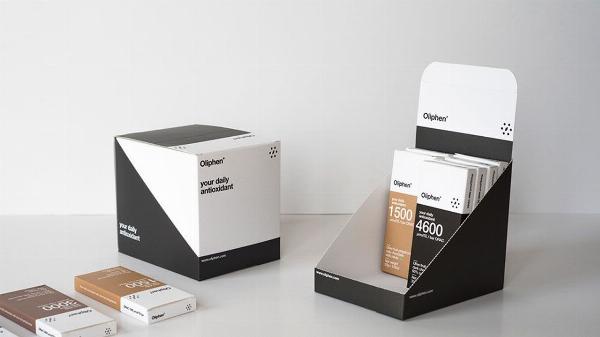Color Psychology in Custom Packaging: Creating Memorable Brand Experiences

Strong 8k brings an ultra-HD IPTV experience to your living room and your pocket.
Color psychology plays a significant role in influencing consumer perceptions and behavior. When it comes to custom packaging, selecting the right colors can create memorable brand experiences that resonate with customers on a subconscious level.
In this article, we will explore the impact of color psychology in custom packaging and how businesses can leverage it to enhance their brand identity and connect with consumers.
Understanding Color Psychology in Packaging
Color psychology is the study of how different colors affect human emotions, perceptions, and behaviors.
In the context of packaging design, colors evoke specific associations and elicit emotional responses that can influence purchasing decisions.
Here's a brief overview of the psychological effects of common colors used in packaging:
1. Red
● Associations: Passion, energy, excitement, urgency.
● Usage: Red is often used to create a sense of urgency or draw attention to limited-time offers. It can also evoke feelings of passion and intensity, making it suitable for products that aim to stimulate or energize consumers.
2. Blue
● Associations: Trust, calmness, reliability, professionalism.
● Usage: Blue conveys a sense of trustworthiness and reliability, making it ideal for brands that want to establish credibility and authority. It also promotes a feeling of calmness and serenity, making it suitable for products related to health, wellness, and technology.
3. Green
● Associations: Nature, growth, freshness, sustainability.
● Usage: Green is closely associated with nature and the environment, making it ideal for eco-friendly or organic products. It symbolizes growth, renewal, and freshness, making it appealing for products related to health, beauty, and wellness.
4. Yellow
● Associations: Optimism, warmth, happiness, youthfulness.
● Usage: Yellow evokes feelings of optimism and happiness, making it suitable for brands that want to create a sense of warmth and friendliness. It grabs attention and stimulates mental activity, making it effective for highlighting key product features or promotions.
5. Purple
● Associations: Royalty, luxury, creativity, spirituality.
● Usage: Purple is often associated with royalty and luxury, making it suitable for premium or high-end products. It also symbolizes creativity and individuality, making it appealing for brands that want to stand out from the crowd and appeal to artistic or spiritual consumers.
6. Orange
● Associations: Energy, enthusiasm, creativity, warmth.
● Usage: Orange exudes energy and enthusiasm, making it ideal for brands that want to create a sense of excitement and vitality. It stimulates appetite and promotes a sense of warmth and friendliness, making it suitable for food and beverage packaging.
Leveraging Color Psychology for Custom Packaging Design
To create memorable brand experiences through custom packaging, businesses can leverage color psychology in the following ways:
1. Showcase Your Colorful Brand Identity
Select colors that align with your brand's identity, values, and personality. Consider how different colors convey your brand's message and resonate with your target audience.
Use consistent color schemes across your packaging to reinforce brand recognition and create a cohesive brand experience. Using green, for example, creates a feeling of freshness, perfect if you are making custom spice packaging for herbs that should come across as fresh and vital.
2. Make People Feel What You Want Them to Feel
Choose colors that evoke the desired emotions and associations you want to communicate with your packaging.
Whether you want to create a sense of excitement, trust, or relaxation, select colors that align with the mood and messaging of your brand and product.
3. Separate Yourself From Competitors Well
Stand out from competitors by using unique color combinations or bold color choices that capture attention and differentiate your packaging on the shelf.
Consider the color schemes used by competitors in your industry and strive to create a distinct visual identity that sets your brand apart. This works well for industries where brands go for the obvious color schemes, such as when packaging pet food.
4. Be Thoughtful About Cultural Context
Take into account cultural differences and associations when selecting colors for your packaging, especially if you operate in diverse markets.
Colors can have different meanings and interpretations across cultures, so research cultural norms and preferences to ensure your packaging resonates with local consumers.
5. Learn What They Have to Say and Pivot
Conduct A/B testing or gather feedback from consumers to evaluate the effectiveness of different color schemes and design elements. Do your custom herb pouches convey exotic, premium quality or does your chosen color make your products seem more like a seasoning commodity?
Use data-driven insights to refine your packaging design and optimize its impact on consumer perceptions and purchasing behavior.
Case Studies: Brands Excelling in Color Psychology in Packaging
Let's examine real-world examples of brands that have successfully leveraged color psychology in their packaging design:
1. Brand: Coca-Cola
Coca-Cola's iconic red packaging evokes feelings of energy, excitement, and happiness, reinforcing its brand image as a timeless and uplifting beverage choice. The bold use of red has become synonymous with Coca-Cola's brand identity and instantly recognizable around the world.
2. Brand: Tiffany & Co.
Tiffany & Co. uses a distinctive shade of blue known as "Tiffany Blue" in its packaging to convey elegance, luxury, and exclusivity. The iconic blue boxes have become synonymous with the brand's commitment to craftsmanship and impeccable quality, creating a sense of anticipation and excitement among customers.
3. Brand: Whole Foods Market
Whole Foods Market's packaging features a vibrant green color scheme that reflects its commitment to natural, organic, and sustainable products. The use of green evokes feelings of freshness, healthfulness, and environmental stewardship, resonating with the brand's health-conscious and eco-friendly customer base.
Choose Colors That Build Your Brand
Color psychology plays a pivotal role in creating memorable brand experiences through custom packaging design.
By understanding the psychological effects of different colors and strategically leveraging them in packaging, businesses can effectively communicate their brand identity, evoke desired emotions, and differentiate themselves from competitors.
Whether it's using red to create a sense of urgency or green to convey sustainability, the right color choices can leave a lasting impression on consumers and drive brand engagement and loyalty. As businesses continue to prioritize brand experience and consumer engagement, mastering color psychology in packaging design becomes an essential tool for creating meaningful connections with customers and driving long-term success.
Note: IndiBlogHub features both user-submitted and editorial content. We do not verify third-party contributions. Read our Disclaimer and Privacy Policyfor details.


